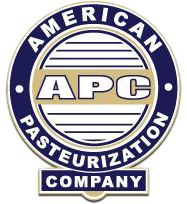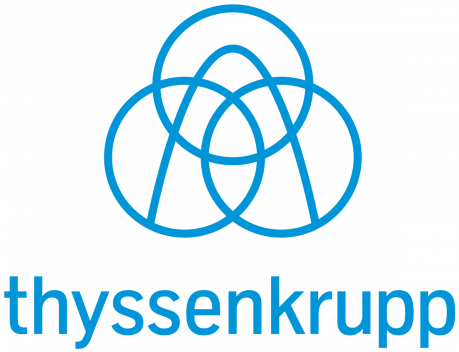High Pressure, High Stakes – Controlling Highly Pathogenic Avian Influenza (HPAI) Virus in Raw Milk and Raw Pet Food Diets
High pressure processing (HPP) is a promising method to mitigate the risk of highly pathogenic avian influenza (HPAI) virus contamination in raw milk and raw pet food diets. By applying high pressures, HPP disrupts the viral structure, inactivating pathogens without the need for heat or chemicals, thus preserving the nutritional integrity of these sensitive food products. As the HPAI outbreak continues to impact poultry and dairy industries across the US, HPP provides a critical tool for enhancing food safety. This presentation explores how HPP can be used to safeguard raw milk and raw pet food diets from HPAI, ensuring both public and animal health.
Targeted Validation of High-Pressure Processing: Lessons from Real-World Applications
This presentation will introduce the role of extension programs in supporting food safety and innovation. High-Pressure Processing (HPP) requires careful, targeted validation to ensure both microbial safety and product quality. Drawing on real-world case studies, I will walkthrough the practical application of HPP across diverse food matrices. The discussion will include validation studies on pet food, ready-to-eat products, and shelf-life extension. Through these examples, I will highlight key lessons learned, common pitfalls, and how collaborative, science-based extension efforts help bridge the gap between industry needs and regulatory requirements.
Bio: Ann Charles Vegdahl is an Extension Associate in the Department of Food Science at Cornell AgriTech. She leads two key programs focused on food microbiology: The Cornell High Pressure Processing (HPP) Validation Center and Cornell Food Safety, Quality and Outreach Program. She and her team support the food industry by analyzing over 500 products annually and have completed more than 100 safety validation studies. Ann provides microbiology testing, technical expertise, and training to food companies, while also collaborating with researchers, regulators, and processors. She is actively involved in Diversity, Equity, and Inclusion initiatives and enjoys spending time with her family and dogs outside of work.
Discover the science behind High-Pressure Processing (HPP) technology and its ability to ensure food safety, extend shelf life, maintain high quality, and preserve nutritional integrity and flavor profiles. This session will explore various applications of HPP across the food and beverage industries, along with best practices for successful implementation. Whether you are a food scientist, production manager, or industry newcomer, you will leave this session equipped with actionable knowledge to effectively apply HPP technology in your operations and stay ahead of market trends.
Working with a High-Pressure Processing Strategic Partner (HPP contract processor)
High-Pressure Processing (HPP) contract processors collaborate with food and beverage manufacturers to help guide them through the entire process of applying HPP to their products for food safety or shelf-life extension, from the concept phase through commercialization. Making the utilization of HPP as seamless and cost effective as possible is the primary goal. Applying HPP to food and beverage products is a multi-step process. There are scientific (laboratory), packaging, and regulatory considerations that need to be addressed. HPP contract processors work directly with manufacturers through each step of this process, providing general process guidance, as well as referrals to co-packing services, packaging suppliers, laboratory services, transportation providers and many other frequently used services.
Join Joyce Longfield at the CPC Annual Conference, as she shares the history of Good Foods Group and their journey toward innovation in fresh food production. This presentation will dive into the science behind High Pressure Processing (HPP), exploring the chemical changes that occur under high pressure and how this technology plays a vital role in extending product shelf life—without compromising quality or nutrition.
When Chick-fil-A's wholly owned subsidiary, Bay Center Foods, invested in their High Pressure Processing (HPP) program, they aimed to achieve multiple objectives. With an already excellent product in the market, the team recognized that HPP could help them utilize more lemons sustainably, reduce demanding and difficult labor tasks, and meet growing consumer demand. Kurt Cahill will discuss their approach regarding operations, materials, and the outcome.
High Pressure, High Stakes – Controlling Highly Pathogenic Avian Influenza (HPAI) Virus in Raw Milk and Raw Pet Food Diets
High pressure processing (HPP) is a promising method to mitigate the risk of highly pathogenic avian influenza (HPAI) virus contamination in raw milk and raw pet food diets. By applying high pressures, HPP disrupts the viral structure, inactivating pathogens without the need for heat or chemicals, thus preserving the nutritional integrity of these sensitive food products. As the HPAI outbreak continues to impact poultry and dairy industries across the US, HPP provides a critical tool for enhancing food safety. This presentation explores how HPP can be used to safeguard raw milk and raw pet food diets from HPAI, ensuring both public and animal health.

Sakif Ferdous
Sakif Ferdous
This presentation explores the intersection of packaging design and sustainability within High Pressure Pasteurization (HPP). HPP presents unique packaging challenges, including high burst strength, barrier integrity, and material resilience under elevated pressures. These performance requirements often conflict with sustainability goals such as source reduction, recyclability, and incorporating post-consumer recycled (PCR) content. The session will examine key material selection criteria, structural design considerations, and functionality and environmental impact trade-offs. Attendees will learn how packaging stakeholders can approach HPP-compatible solutions that align with broader corporate sustainability targets, including life cycle assessment (LCA) implications, regulatory impacts, and material innovation.
















